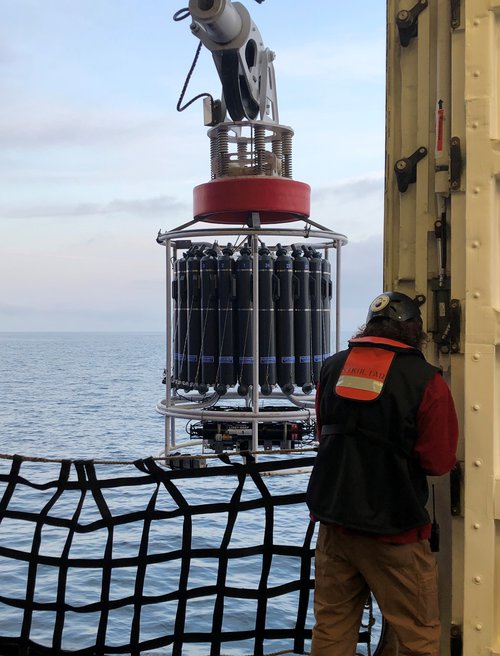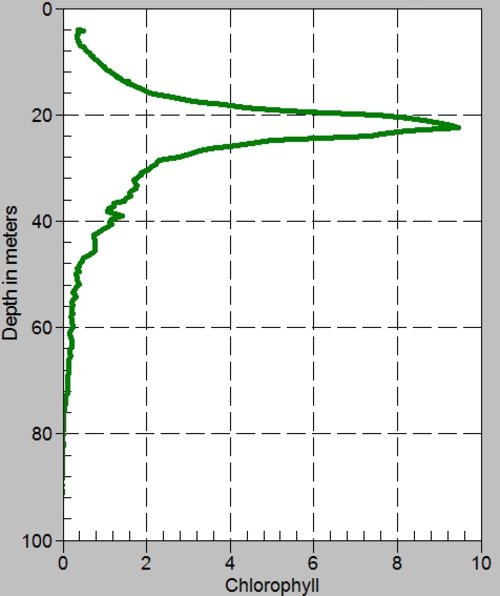
By Eric Collins, Professor in Oceanography, University of Alaska Fairbanks
July 26, 2019
As the remotely operated vehicle Global Explorer sinks through the water column on its way to explore the Gulf of Alaska Seamounts, it passes through the sunlit zone where phytoplankton grow before heading into the inky darkness of the deep sea. Like in the story of “Goldilocks and the Three Bears,” there is often a place which is “juuuust right” – for phytoplankton to grow.
Unlike Goldilocks, phytoplankton don’t need to eat porridge – they make their own food using energy from the sun! But they do prefer to grow in a spot that’s not too sunny (but not too dark), and which has plenty of nutrients and vitamins. The perfect spot is often not at the surface, but deeper in the water column where sunlight comes in from above and nutrients come up from below – juuuust right.

The CTD instrument is lowered into the water to measure the water column profiles. Image courtesy of Katrin Iken, University of Alaska Fairbanks. Download larger version (jpg, 3.9 MB).
Aboard Sikuliaq, we can see where this Goldilocks zone is by measuring the amount of chlorophyll in the water using an instrument called a fluorometer. Chlorophyll is the main pigment used by phytoplankton’s internal solar panels, which allow them to collect light and turn it into chemical energy. A fluorometer measures the amount of chlorophyll in the seawater by shining ultraviolet (UV) light through the water and measuring the amount of red light that is produced by the chlorophyll in response to the UV.
A fluorometer is a standard component of every CTD (Conductvity Temperture Depth) rosette, an instrument used by oceanographers to measure water column properties. This means that with every CTD cast, we get a nice profile of the chlorophyll content in the ocean below us. The plot below shows that the Goldilocks zone below Sikuliaq right now is about 22 meters (70 feet) deep!

The image shows water column depth on the vertical axis and the amount of fluorescence on the horizontal axis. The spike in fluorescence, a measure of chlorophyll, can be seen at 22 meters (70 feet). Image courtesy of Eric Collins, University of Alaska Fairbanks. Download larger version (jpg, 106 KB).